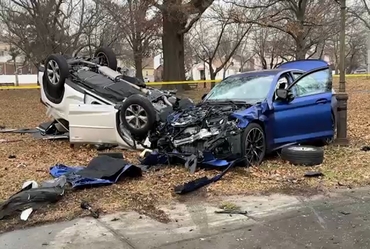Search

Car accidents claim over a million lives each year worldwide, and while many types of collisions occur daily, some are significantly more deadly than others. Of these, head-on collisions are widely recognized as the deadliest type of car accident. Their violent nature, combined with human error, speed, and lack of protective barriers, makes them especially dangerous.
In this article, we’ll explore what makes head-on collisions so deadly, how they compare to other types of crashes, and what drivers and policymakers can do to prevent them.
A head-on collision occurs when two vehicles collide in opposite directions. These accidents typically occur on undivided two-way streets, during overtaking attempts, or when a vehicle drifts into the wrong lane—often due to distraction, fatigue, or intoxication.
What makes these accidents particularly dangerous is the force of the impact. Unlike other collisions where only one vehicle’s speed contributes to the severity, in head-on collisions, the combined speed of both vehicles adds to the impact, effectively doubling the force.
For example, if both cars are moving at 60 mph, the resulting crash impact is comparable to hitting a stationary object at 120 mph. This level of force can easily destroy a vehicle and prove fatal to its occupants.
The front of a car houses many structural components designed to absorb energy, but there’s only so much force a vehicle can absorb before it fails. In a head-on collision, the crumple zones, airbags, and seatbelts may not be enough to protect occupants from the intense impact.
This direct collision often causes severe trauma, especially to the head, neck, and chest, which can cause immediate or delayed fatalities.
Many collisions occur on highways or rural roads where vehicles are traveling at high speeds. The higher the speed, the greater the force and the lower the chance of survival. Even with airbags and seat belts, the human body has limits. High-speed impacts can cause internal bleeding, spinal cord injuries, brain trauma, and other fatal conditions.
These accidents often happen in seconds, giving drivers little or no time to avoid the crash. A distracted or drowsy driver may cross the centerline without realizing it, and the oncoming vehicle may not have enough time or room to steer clear. In rural areas, where emergency response times may be slower, the risk of death increases further.
While head-on collisions top the list for fatal outcomes, other types of accidents also carry serious risks. Here’s how they compare:
These accidents occur when one vehicle collides with another, often at intersections. The sides of cars typically have less structural reinforcement than the front or rear, putting passengers at greater risk. While these accidents can also be fatal—especially for those sitting on the affected side—they are usually less deadly than head-on collisions because of the lower speed and angle of impact.
Rollover crashes are particularly dangerous in SUVs and trucks due to their higher center of gravity. While not as common, these accidents often result in fatalities when occupants are ejected from the vehicle or the roof collapses during the roll.
Rear-end accidents are the most common but are usually less fatal. They often occur at lower speeds in traffic congestion and typically result in injuries like whiplash rather than life-threatening trauma. However, when a large vehicle like a truck hits a smaller car at high speed, fatalities can occur.
Understanding the root causes of conflict is essential to preventing them. Here are some leading contributors:
Reducing the frequency and fatality of head-on crashes requires a multi-layered approach involving drivers, infrastructure, and vehicle technology.
Be alert and avoid distractions. Never drive under the influence of alcohol or drugs. If you feel drowsy, pull over and rest. Keeping both hands on the wheel and eyes on the road can make all the difference.
Installing centerline rumble strips, median barriers, and improved signage on high-risk roads can significantly reduce the chances of vehicles crossing into opposing lanes. Better lighting on rural roads also improves visibility and reaction times at night.
Modern cars come with advanced driver assistance systems (ADAS) such as lane departure warnings, automatic emergency braking, and collision avoidance systems. These features can help prevent or reduce the severity of head-on crashes.
Head-on collisions are the deadliest type of car accident due to their violent nature, high speeds, and direct impact on occupants. Although they’re less common than rear-end or side-impact crashes, they account for a disproportionately high number of fatalities.
By staying focused, obeying traffic laws, improving road infrastructure, and utilizing safety technologies, we can drastically reduce the risk of these devastating accidents. Every life lost on the road is a preventable tragedy—and understanding the dangers is the first step toward safer driving.